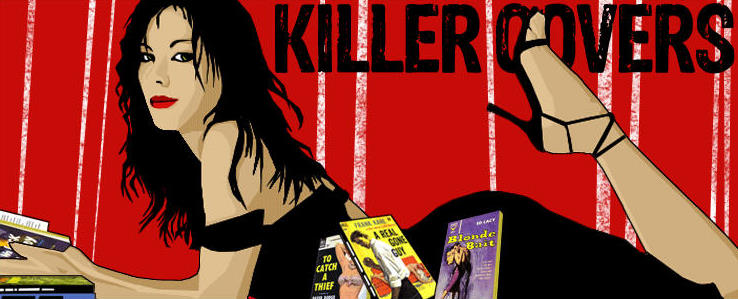
I’ve written at some length about Indiana-born novelist Thomas B. Dewey once before on this page. But the posting today of my latest Kirkus Reviews column, which revisits Dewey’s life and his many contributions to crime fiction, provides another opportunity for me to remark on this guy who Bill Pronzini called “one of detective fiction’s severely underrated writers.” You’ll find my column here.
In addition to composing the Kirkus piece, I have put together a rather extensive--but still far from comprehensive--collection of Dewey’s book covers over the years, which I hope you will take a few minutes to study below. Most of them come from his two principal series, featuring either compassionate Chicago gumshoe Mac (“one of the most consistently satisfying private-eye series,” as David Geherin wrote in 1985’s The American Private Eye: The Image in Fiction) or happily married Los Angeles shamus Pete Schofield. There are also a couple of works here that he published as “Tom Brandt” (one of two pseudonyms he employed, the other being “Cord Wainer”). The illustrators represented in this set include Victor Kalin (Go, Honeylou, The Girl with the Sweet Plump Knees, The Girl in the Punchbowl, Nude in Nevada), Ron Lesser (A Season for Violence, Only on Tuesdays), Robert Maguire (Dame in Danger), James Meese (The Mean Streets), Ray Johnson (And Where She Stops), Barye Phillips (The Golden Hooligan), Victor Olson (Mourning After), and Robert K. Abbett (Hunter at Large). The front from the 1965 Pocket Books edition of A Sad Song Singing, embedded at the top of this post, is credited to the immensely talented Harry Bennett, about whom I first wrote in connection with his artwork for Frank Kane thrillers.
Click on any of the images below to open an enlargement.


































Because you’ve been such a fine audience, I am going to toss you a bonus. Below you’ll find the introductory spread for Cosmopolitan magazine’s September 1958 excerpt from Dewey’s The Case of the Chased and the Unchaste. The art is credited to Denver Gillan.

And click here to see facsimiles of the original dust jackets from U.S. and UK hardcover releases of Dewey’s novels.
















